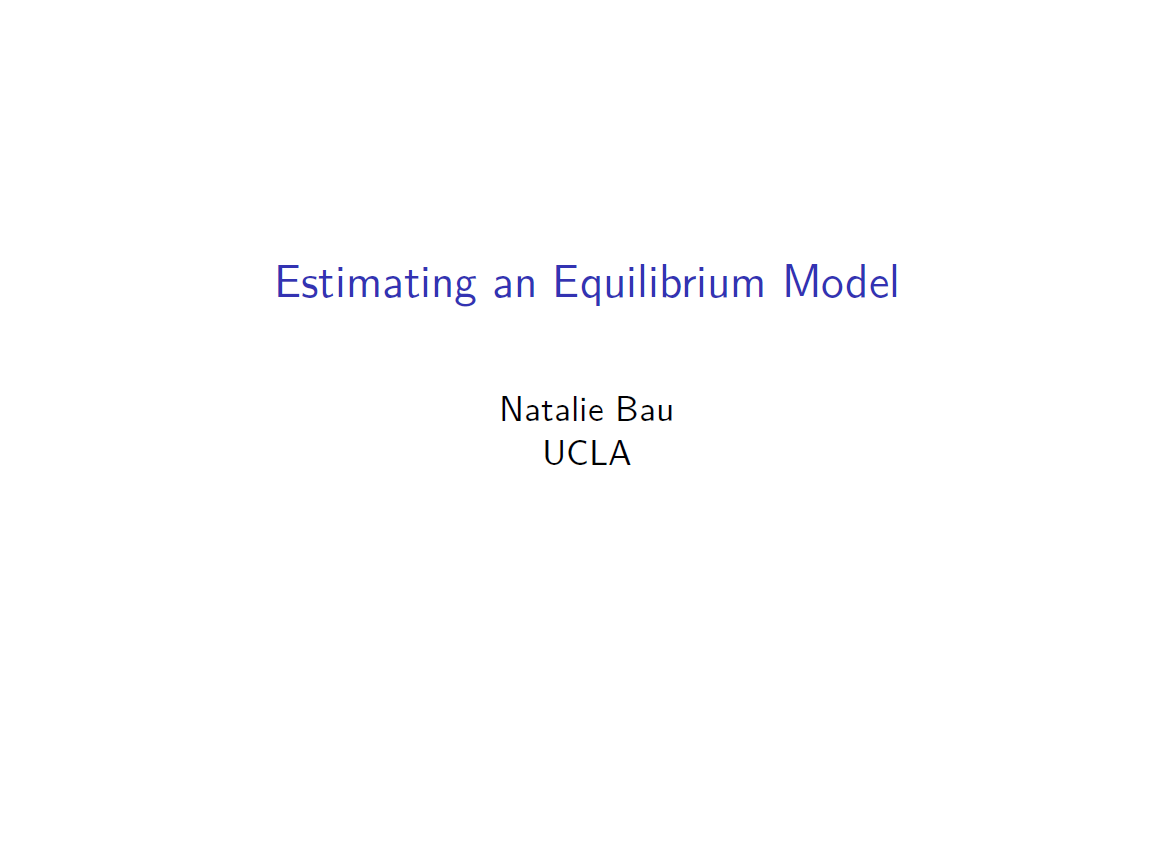Summary: The quality of the match between students and schools affects learning but little is known about the magnitude of these effects or how they respond to changes in market structure. I develop a quantitative equilibrium model of school competition with horizontal competition in match quality. I estimate the model using data from Pakistan, a country with high private enrollment, and (1) quantify the importance of good matches, (2) show that profit-maximizing private schools’ choices of quality advantage wealthier students, increasing inequality and reducing overall learning, and (3) provide intuition for when interventions in the market are valuable.
Estimating an Equilibrium Model of Horizontal Competition in Education
Citation: Bau, Natalie. 2022. “Estimating an equilibrium model of horizontal competition in education”, Journal of Political Economy. 130 (7).
Natalie Bau
Study Design and Findings
A student who knows calculus will not benefit from remedial math instruction, no matter how well taught. Similarly, a student who has never learned fractions is unlikely to benefit from calculus. A growing literature shows that the match between a student’s instructional needs and a school’s instructional level is an important determinant of learning. Given the importance of this match, instructional level may be misallocated, with students attending schools whose instruction is not well-matched to their needs. Yet little is known about the extent of this misallocation, how schools choose their instructional level, and how their choices of instructional level respond to competition.
Indeed, competition may increase the misallocation of instructional level. Private schools do not typically provide the socially optimal quality, and if increased competition causes the marginal consumer’s preferences to be further from those of the average consumer, competition may reduce welfare. These distortions may be exacerbated if students have limited information about schools’ instructional levels. Given extremely high rates of private schooling, low levels of learning, and the frequency of a single teacher teaching all the students in a grade in low-income countries, understanding how instructional match interacts with private schools’ competitive incentives may be crucial for improving students’ outcomes. The increasing popularity of policies that incentivize school competition in low-income countries further underscores the importance of understanding the interaction between match-specific quality and competition.
To evaluate the importance of instructional match and how it interacts with competition, I develop a novel, equilibrium model. In this model, private schools choose their instructional levels strategically to maximize profits in response to competitive incentives, rich and poor students have different optimal instructional levels, and students choose schools based on their characteristics to maximize their perceived utilities. I estimate both the demand and supply-sides of this model using data from a particularly relevant context, Pakistan’s rural private schooling market. As in many low-income countries, private school enrollment in Pakistan is large and fast-growing.
The match between a student and their school is important
The match between a school's instructional level and a student's instructional needs has large effects on learning in Pakistan. A school can increase yearly test score gains for poor students by as much as 0.36 s.d. (equivalent to nearly one year of education) by moving from wealthy students’ optimal instructional level to poor students’ optimal instructional level.
Private schools cater to the instructional needs of richer students
I find that individuals from poorer households are substantially less responsive to a schools’ match-specific quality when they make enrollment decisions. This may be driven by the fact that poorer students have less information about school quality (their self-reported rankings of school quality are less correlated with their predicted test score gains from attending a school). As a result, profit-maximizing private schools – responding to competitive incentives — choose instructional levels that are better-suited to wealthier students because these students make enrollment decisions that are more responsive to quality. Relative to the instructional levels a social planner maximizing learning would choose, this leads to greater inequality between wealthier and poorer students within the same private school, as well as learning losses.
Greater competition incentivizes private schools to cater even more to richer students
The entry of a new private school into the market intensifies competition for richer students, which makes wealthier students relatively more marginal. This leads schools to move even closer to their optimal instructional level; exacerbating inequality in learning and increasing within-school inequality in the private sector.
Altogether, these findings suggest that improving instructional match can be an important tool for increasing learning in low-income countries but also highlight the challenges to improving instructional match. Increased competition can actually increase mismatch by incentivizing private schools to cater more intensively to the instructional needs of their wealthy students. Additionally, efforts that aim to increase instructional match may need to be paired with informational interventions that improve students’ ability to sort into their best-match schools.
Study Resources
The following resources are for public use in presentations, papers, lectures, and more under the Creative Commons license BY-ND. Click the images below to view or download individual images, or use the button to download all.
As a condition of use, please cite as: Bau, Natalie. 2022. “Estimating an equilibrium model of horizontal competition in education”, Journal of Political Economy. 130 (7).
Relationship between private school entry and variance in test scores in the private school
Distribution of instructional level in the private sector
Increase in learning when a social planner chooses private schools' match-specific quality when students are more or less sensitive to school quality
Estimating an Equilibrium Model Presentation








